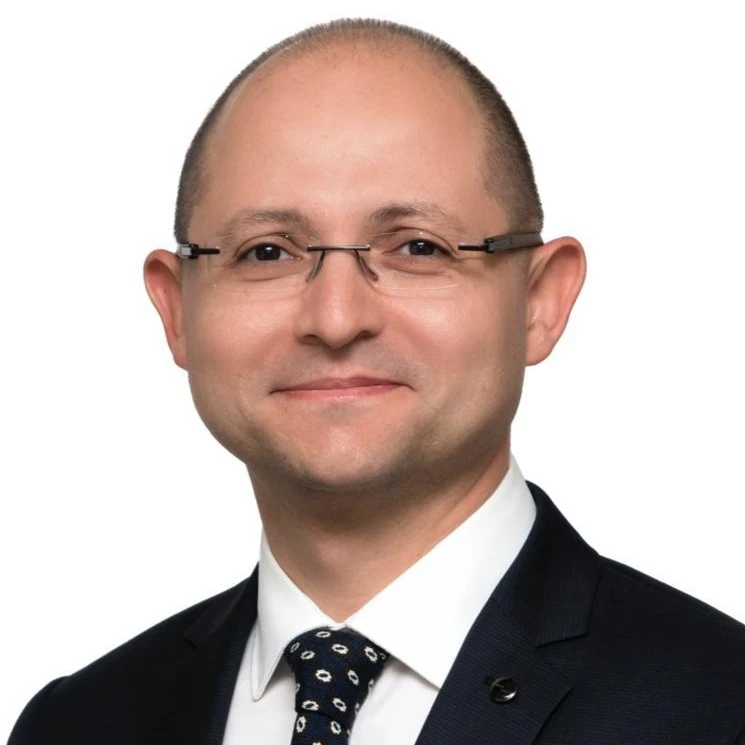3520 - Correlation between Pan-Immune Inflammation Value Dynamics and Magnetic Resonance Imaging Response in Locally Advanced Rectal Cancer Treated with Total Neoadjuvant Therapy
Presenter(s)

S. Senyurek1, D. Karahacioglu2, M. Duman1, B. Gurses2, M. Vural3, D. Sezen1, N. Kilic Durankus1, S. E. Oymak4, S. Lacin5, F. Selcukbiricik5, N. Molinas Mandel5, P. F. Yumuk6, D. Bugra7, E. Balik8, Y. Bolukbasi1, and U. Selek1; 1Koc University, School of Medicine, Department of Radiation Oncology, Istanbul, Turkey, 2Koc University, School of Medicine, Department of Radiology, Istanbul, Turkey, 3VKF American Hospital, Department of Radiology, Istanbul, Turkey, 4VKF American Hospital, Department of Radiation Oncology, Istanbul, Turkey, 5Koc University, School of Medicine, Department of Medical Oncology, Istanbul, Turkey, 6VKF American Hospital, Department of Medical Oncology, Istanbul, Turkey, 7VKF American Hospital, Department of General Surgery, Istanbul, Turkey, 8Koc University, School of Medicine, Department of General Surgery, Istanbul, Turkey
Purpose/Objective(s): Total neoadjuvant therapy (TNT) have been a game-changer by providing high complete response rates, offering non-operative management (NOM) alternative to total mesorectal excision (TME) in locally advanced rectal cancer (LARC). We evaluated the correlation between the Pan-Immune Inflammation Value (PIV), including systemic inflammatory blood parameters, and MRI (Magnetic Resonance Imaging) response in TNT.
Materials/Methods: Between 2018 and 2024, patients diagnosed with LARC who underwent TNT (induction chemo + chemoradiotherapy + consolidation chemo) were evaluated. Patients who had rectal staging protocol MRI at the time of diagnosis and at the end of treatment, with existing blood parameters at the initiation of treatment and three weeks after TNT, were included. Two groups were formed based on MRI tumor regression grade (mrTRG): Complete response group (CRG) (mrTRG1-2) and residual disease group (RDG) (mrTRG3-5). PIV = (Platelet x Monocyte x Neutrophile) / Lymphocyte. Blood parameters at the time of the first chemotherapy (first-PIV) and three weeks after the final chemotherapy (last-PIV) were recorded. The absolute difference between the last-PIV and first-PIV was calculated and defined as ?-PIV. The optimal ?-PIV cut-off value was determined using a receiver operating characteristic (ROC) curve analysis to explore how it relates to CRG and RDG.
Results: Seventy-three patients were retrospectively analyzed. The median follow-up was 26 months (range: 1–67 months). There were 32 patients (43.8 %) in CRG and 41 patients (56.2%) in RDG. The D-PIV parameter was determined statistically significant in differentiating between CRG and RDG, and a threshold value was established as -36,9 (area under curve: 0.705; sensitivity: 53.7%, specificity:84.4 %). Details given in Table 1.
Conclusion: The patients in our cohort who responded well to TNT with objective MRI radiological complete response were the ones who had improved systemic inflammation through prescribed TNT. Accordingly, we recommend dynamic monitoring of PIV at admission and follow up to serve as a possible predictor to strengthen the decision for complete response and NOM protocol.
Abstract 3520 - Table 1| Characteristic | Complete Response Group | Residual Disease Group | p value |
| Age, median (range) | 60 (36-77) | 59 (36-82) | 0.70 |
| Gender Female Male | 10 22 | 19 22 | 0.22 |
| Tumor Location Distal Middle Proximal | 13 19 0 | 13 26 2 | 0.36 |
| Initial MRI T stage T3a T3b T3c T3d T4a T4b | 9 15 6 2 0 0 | 6 12 7 3 3 10 | 0.02 |
| Initial MRI Mesorectal Node Status No Yes | 16 16 | 10 31 | 0.02 |
| Initial PIV, mean ± SD | 421.8 ± 207.6 | 397.2 ± 271.9 | 0.38 |
| Last PIV, mean ± SD | 224.5 ± 132.3 | 444.8 ± 420.6 | 0.006 |
| ?-PIV, mean ± SD | 47.49 ± 402.5 | -197.2 ± 210.7 | 0.001 |
